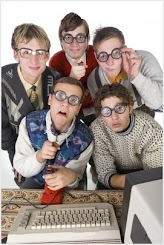0
Back to golf
Posted by Chris
on
Friday, July 31, 2009
in
botbuilder,
eeprom,
nokia screen,
petanque,
robot steve,
scoresure
Well actually, back to the more generic type of game scoring device. While RobotSteve gets on with making some rather smashing looking servo controller boards I've been coding yet more for the golf device.
To date we've got
Something to look out for with these Nokia breakout boards is running them at under-voltage.
I left my PP3 (9v) battery connected to the display all night and in the morning the battery was only giving out 7v. This meant - and I've yet to work out why - that only 4.3v was coming out of the voltage regulator, instead of the full 5v (not very regulated then!).
At this voltage, the Nokia screen (which usually requires 5v to drive it) would reset intermittently. This would sometimes also cause the pic micro to reset too. So behaviour was very unpredictable. Also, because of the lower supply voltage, the joystick values did not read true, and the logic to decide which button was pressed did not always work either (with the effect that the menu selector would appear to pick random entries from the list, instead of the one immediately above/below the highlighted entry).
Below is a video showing Nokia development so far.
It shows how eeprom-driven menus can move control onto a new screen (screen refreshing is slow because we're reading bitmap bytes from eeprom at just 400khz, not a the full 20Mhz that the chip can run at) and also how to edit player details.
Once perfected, these techniques can be used as the basis for other game scoring devices - after all, most games involve picking one or more players, entering their names, and providing some extra information (such as handicap/tee preference in golf, maybe boule weight or team position - pointer, shooter, middle - for petanque and so on).
To date we've got
- eeprom driven menus
- up to 4 player support
- Edit player names
- Edit player parameters (handicap and golf tees)
- eeprom driven bitmaps
- Nokia-type joystick support
Something to look out for with these Nokia breakout boards is running them at under-voltage.
I left my PP3 (9v) battery connected to the display all night and in the morning the battery was only giving out 7v. This meant - and I've yet to work out why - that only 4.3v was coming out of the voltage regulator, instead of the full 5v (not very regulated then!).
At this voltage, the Nokia screen (which usually requires 5v to drive it) would reset intermittently. This would sometimes also cause the pic micro to reset too. So behaviour was very unpredictable. Also, because of the lower supply voltage, the joystick values did not read true, and the logic to decide which button was pressed did not always work either (with the effect that the menu selector would appear to pick random entries from the list, instead of the one immediately above/below the highlighted entry).
Below is a video showing Nokia development so far.
It shows how eeprom-driven menus can move control onto a new screen (screen refreshing is slow because we're reading bitmap bytes from eeprom at just 400khz, not a the full 20Mhz that the chip can run at) and also how to edit player details.
Once perfected, these techniques can be used as the basis for other game scoring devices - after all, most games involve picking one or more players, entering their names, and providing some extra information (such as handicap/tee preference in golf, maybe boule weight or team position - pointer, shooter, middle - for petanque and so on).



